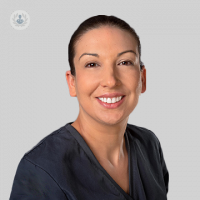Common skin lesions, their symptoms and treatment
Written by:What are the common types of skin lesions that can occur?
There are several different skin lesions. They can be split into two groups: benign skin lesions and malignant skin cancers.
Benign skin lesions are quite common. Usually, they are benign moles and are extremely common.
Other skin lesions come as people get older such as seborrhoeic keratoses, which are warty, benign lesions that some people get.

Additionally, people can also get warts from a virus and other skin lesions can occur due to sun damage. For example, actinic keratoses can occur because of sun damage. These can be the precursor of a cancerous lesion called squamous cell carcinoma.
The most common skin cancer lesion is basal cell carcinoma. However, there are also more dangerous types of skin cancers such as squamous cell carcinoma and malignant melanoma, which can be serious.
How is a diagnosis of a skin lesion made?
Sometimes doctors are able to detect if the lesion is skin cancer just by looking at it. Sometimes a GP can know just by looking at it but at times it is more difficult to detect. In these cases, the skin lesion will need to be seen by a dermatologist or a plastic surgeon with an interest in skin cancer.
A dermatoscope may be used. It magnifies the lesion and has special lights which enable doctor to see the lesion and its features in more detail.
Sometimes by looking at the skin lesion, a specialist can be sure that it is something like seborrhoeic keratosis, which is a benign lesion.
However, if they are unsure or concerned then they will remove the lesion or part of it for a biopsy. Once they remove the lesion carefully by cutting it and stitching it up, it gets sent to a pathologist and a specialist skin dermatologist called a dermatopathologist. This specialist will look at the cell under the microscope and may perform special tests to get the final diagnosis.
What are the treatment options for skin lesions?
If the skin lesions are nothing to worry about, they can be left alone. If someone does not like them or if they are irritating or itching and bothering the patient then the lesion can be removed surgically or shaved if it is benign.
If removed by cutting it out with a narrow margin and stitching it up there is often less of a recurrence rate. However, it depends on where it is on the body and depending on what the lesion is, which technique of removal will give the best cosmetic result.
If the skin lesion is a skin cancer, doctors do not have any choice but to remove the lesion completely. However, some superficial types of sun damage and superficial types of skin cancer can sometimes be treated with creams or even a light therapy after a cream.
With skin cancer, it is essential to remove the lesion with a safety margin.
Can skin lesions be prevented? If so, how can this be done?
Some skin lesions cannot be prevented and some skin lesions may be hereditary.
Skin lesions that occur due to sun exposure can be prevented by avoiding sun damage. Sometimes the damage is done in the early years life so it is difficult to change that now. However, going forward it is essential to be careful with sun protection and to use a high SPF.
With sun protection, it is important to take vitamin D because we need some sun exposure for our skin to make vitamin D. Vitamin D is available to take in tablet form or as a spray.
Sun protection is very important for preventing skin cancer lesions.
Although you may not be able to prevent some skin lesions, but you may be able to catch them early.
If you notice any lesion is growing or changing on the body, you should see a doctor sooner rather than later. The outcome can be much better this way and removal can prevent melanoma from advancing, if the lesion is cancerous.
Can skin lesions be cancerous or are they always benign?
In some cases, skin cancers can be benign and nothing to worry about. In other cases, the lesions can be cancerous.
For this reason, it very important to assess any new lesion that has appeared or anything changing. This is particularly important with ageing, as we get older, anything new is suspicious.
Anything that is growing, changing, bleeding, itching or showing itself to be a problem must be checked carefully by a doctor.


